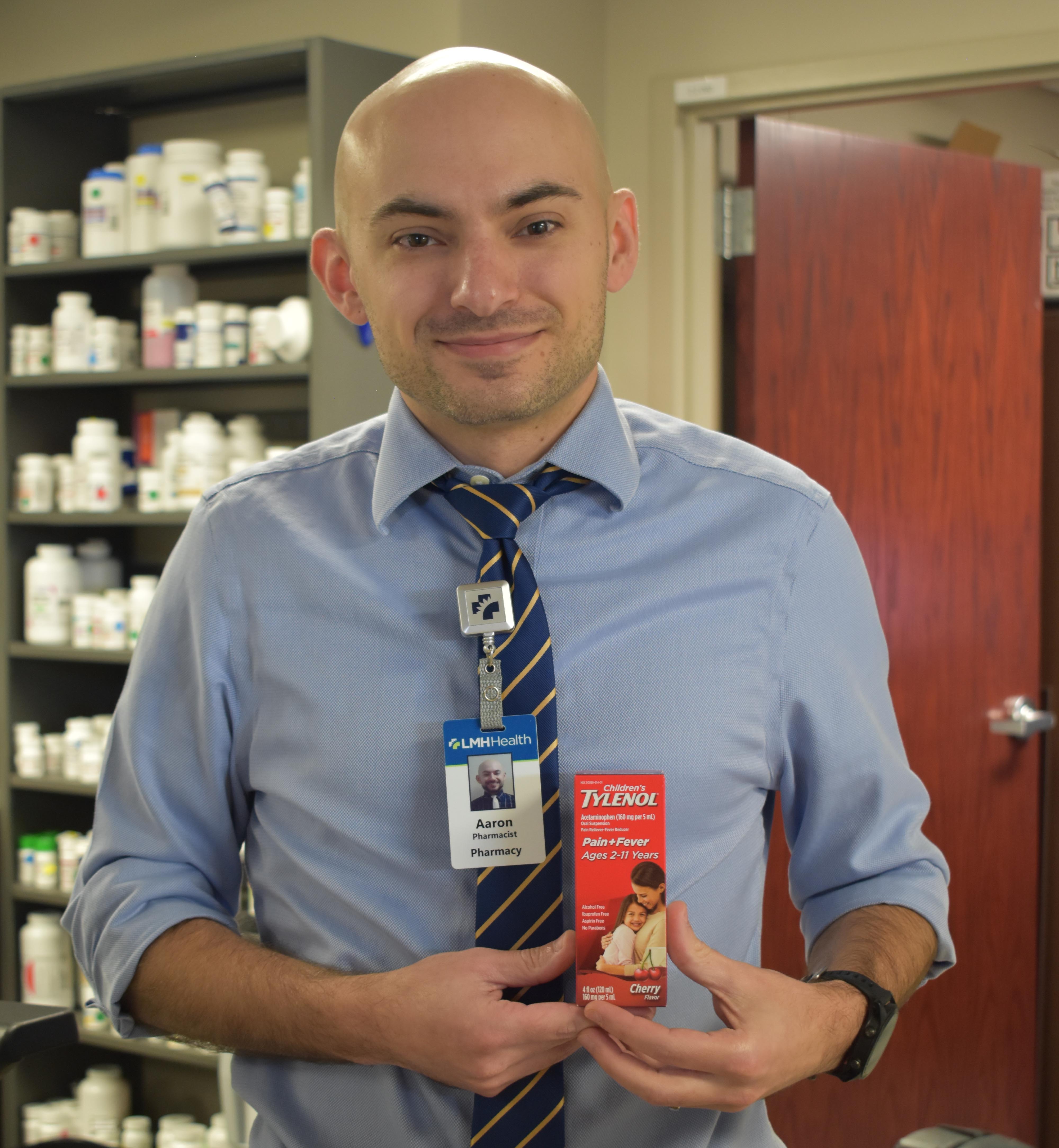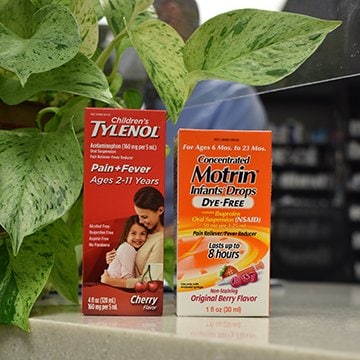Trouble finding children's meds? Here's what you need to know
When our children or loved ones are sick, the first reaction is normally focused on how to fix it and how to make them as comfortable as possible. With the recent shortages of some children’s medication, many families are left feeling panicked and worried.
Across the United States, stores are struggling to stock a wide range of children’s medications, such as Tylenol and Advil, also known as acetaminophen and ibuprofen. This is a direct result of a surge in respiratory viruses, such as the flu and common cold.

Krista Whitney, MD
“It is important that parents know what acetaminophen and ibuprofen do,” said Panda Pediatrics pediatrician Krista Whitney, MD. “They are effective in treating fevers, pain and inflammation. They do not treat runny nose, cough or congestion.”
So if they do not shorten the duration of illness, why are parents rushing to find these medications? The answer is simple - comfort. Medications such as acetaminophen and ibuprofen can help a sick child or adult feel more comfortable while their body fights off infection.
“Fevers themselves typically are not dangerous,” said Dr. Whitney. “Fevers are one of the ways our bodies fight infections. Fevers give us reassurance that a patient’s immune system is working.”
While labeled differently, it’s important to understand that there is not a big difference between children’s and adults’ Tylenol and ibuprofen, outside of dosage and concentration. However, giving the right dose is important for both safety and efficacy.

Aaron Pope
“Children’s medicine is less concentrated than adult medicine to make it safer,” said Aaron Pope, a pharmacist at LMH Health. “It is also flavored and usually comes in either a liquid or a dissolvable tablet to make it easier for children to take.”
Breaking the fever
Dr. Whitney recommends using medication to break or lower a fever only when the child is uncomfortable as a result. That’s when it is time to bring out the acetaminophen and ibuprofen—though they aren’t the only options. There are a few home remedies you can try in addition to or by themselves if you cannot find acetaminophen and ibuprofen.
- Wear lightweight clothing: A great way to help the body expel heat is to take off the extra layers. Instead of long sleeves, socks or pants, try to select clothes that are loose and made of lightweight material.
- Eat popsicles: This treat is great for cooling off no matter the season. Popsicles help to provide cool relief and rehydrate the body.
- Stay hydrated: A fever raises the temperature and causes the body to sweat. The sweat serves as your natural way of cooling down. Hydration is a great way to replenish all the water that has left the body through sweat. If you have a kiddo that is throwing up or struggling to keep down liquids, have them try sucking on crushed ice.
- Use a lukewarm washcloth: A lukewarm washcloth on the head can also help bring the temperature down. It is important that the washcloth is not cold, as a large temperature difference may cause chills which could raise the body temperature.
Seeking medical attention
Fevers for children can be much higher than for adults. Anything below 100.4⁰ F is not considered a fever, while a fever between 100.4⁰ F to 104⁰ F is what is considered typical. How long you should wait to seek medical attention for a child with a fever should last depends on the child’s age.
- Infants under two months old: Fevers over 100.4⁰ F in infants less than two months old warrant medical attention.
- Three months old to three years old: If your child has a persistent fever, seek medical care by the third day.
- Four years and older: By the fifth day of a fever, seek medical care.
When deciding to seek medical attention, there a few additional factors to consider. Ear or neck stiffness means they need to be seen sooner, as these symptoms could be caused by an underlying infection that will require antibiotics.
“In younger kids, I get worried about dehydration,” said Dr. Whitney. “Call the doctor if you notice that they aren’t wetting diapers or have a dry mouth. If the child is struggling to breathe, seek immediate medical attention.”
Finding and dosing Tylenol and ibuprofen

Children's Tylenol and Motrin (ibuprofen)
Even with the shortage, your child’s physician or pharmacist may be able to help. Healthcare providers oftentimes learn before the public when a store receives more medication.
“If you can’t find any children’s medicine, please give your pharmacist or physician a call,” said Pope. “If your child can swallow tablets, we can help you find the right amount of an adult dose for your child based on their weight. It won’t taste as good or go down as easy, but it’ll be better than nothing!”
If you can find infant Tylenol, but not children’s, you can adjust the dose to fit your child’s needs. Dr. Whitney shared that in the United States, all liquid acetaminophen or Tylenol is the same. It does not matter if it says infant or child. She emphasized that ibuprofen, which can only be given to children 6 months or older, has different concentrations so checking dosing is important.
Before attempting to modify the dosing for either Tylenol or ibuprofen, talk with your doctor or pharmacist. They will be able to safely figure out the correct dosage base on the child’s age and weight.
“In the meantime, it is important to treat your child’s symptoms as best as you can with the resources you have,” Pope said.